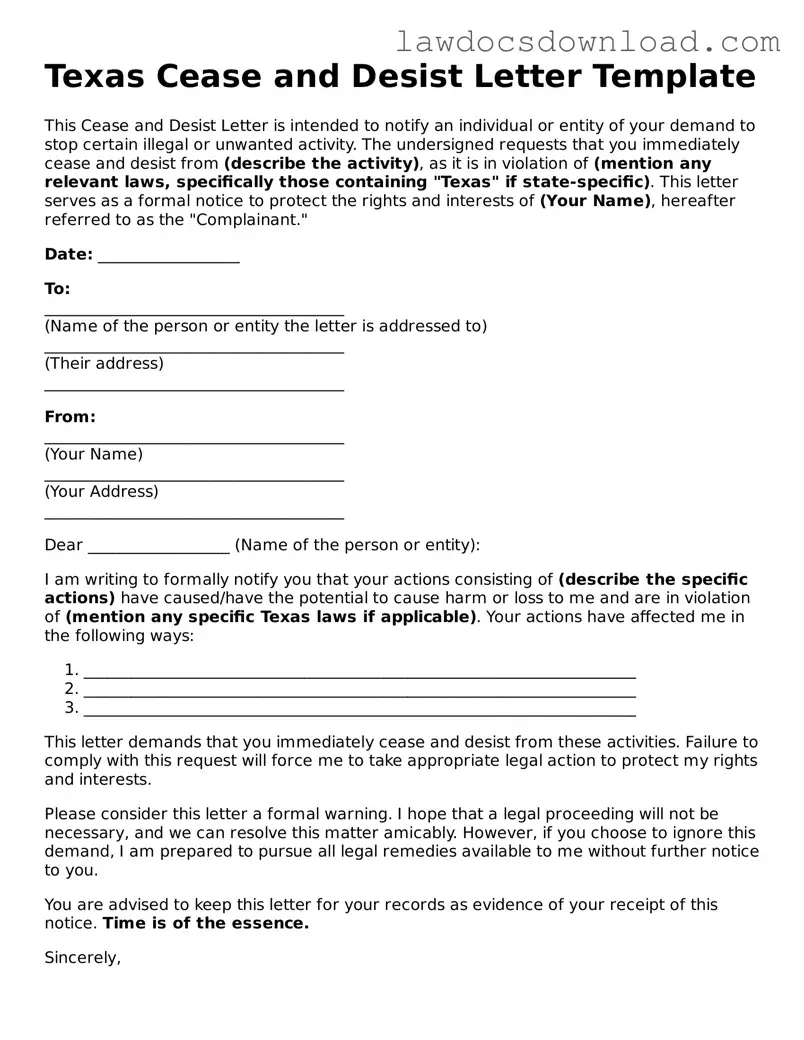Texas Cease and Desist Letter Template
This Cease and Desist Letter is intended to notify an individual or entity of your demand to stop certain illegal or unwanted activity. The undersigned requests that you immediately cease and desist from (describe the activity), as it is in violation of (mention any relevant laws, specifically those containing "Texas" if state-specific). This letter serves as a formal notice to protect the rights and interests of (Your Name), hereafter referred to as the "Complainant."
Date: __________________
To:
______________________________________
(Name of the person or entity the letter is addressed to)
______________________________________
(Their address)
______________________________________
From:
______________________________________
(Your Name)
______________________________________
(Your Address)
______________________________________
Dear __________________ (Name of the person or entity):
I am writing to formally notify you that your actions consisting of (describe the specific actions) have caused/have the potential to cause harm or loss to me and are in violation of (mention any specific Texas laws if applicable). Your actions have affected me in the following ways:
- ______________________________________________________________________
- ______________________________________________________________________
- ______________________________________________________________________
This letter demands that you immediately cease and desist from these activities. Failure to comply with this request will force me to take appropriate legal action to protect my rights and interests.
Please consider this letter a formal warning. I hope that a legal proceeding will not be necessary, and we can resolve this matter amicably. However, if you choose to ignore this demand, I am prepared to pursue all legal remedies available to me without further notice to you.
You are advised to keep this letter for your records as evidence of your receipt of this notice. Time is of the essence.
Sincerely,
______________________________________
(Your Signature)
______________________________________
(Print Your Name)
CC: ______________________________________
(Include if you are sending copies to other parties, such as lawyers or advisers)
